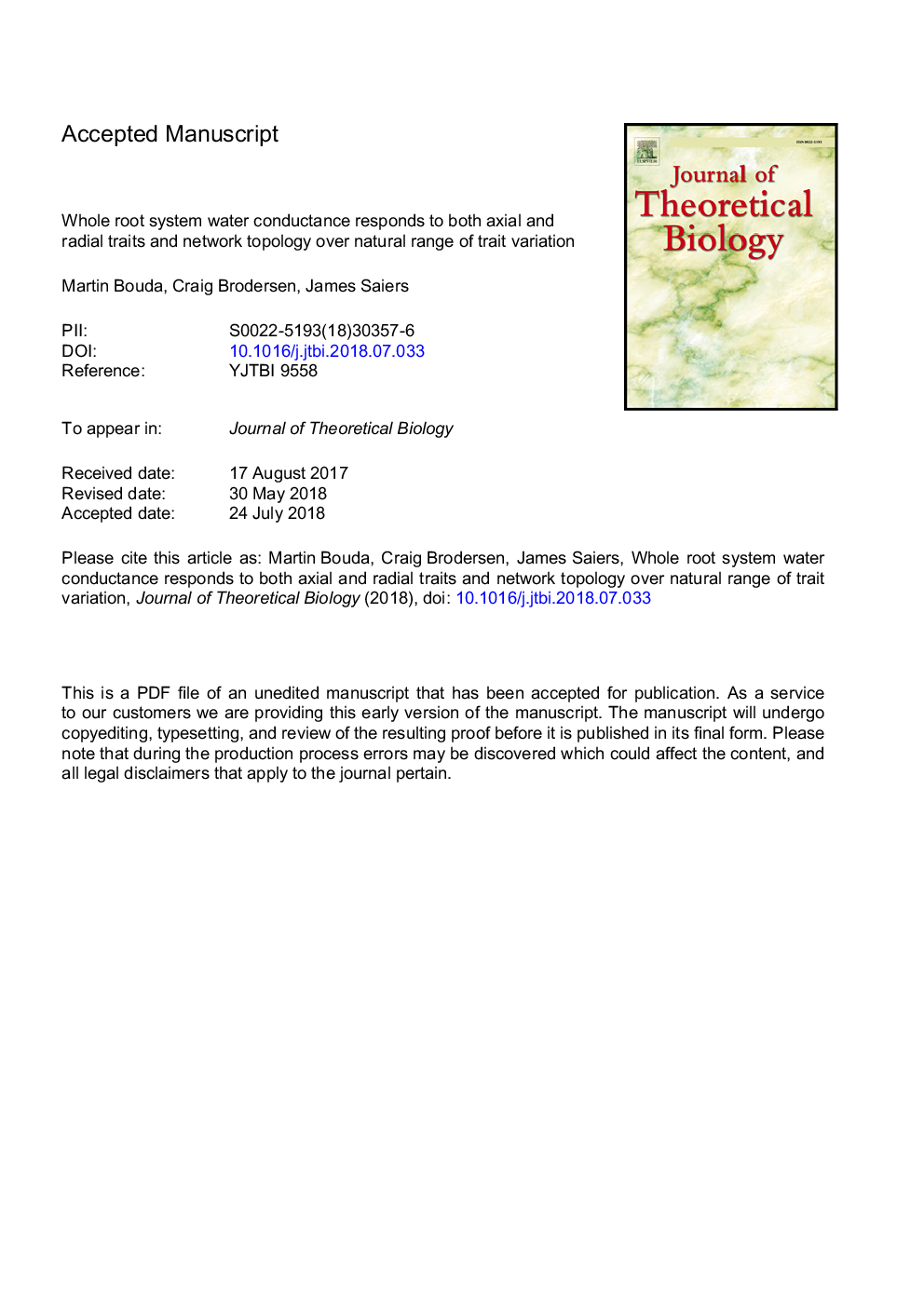| Article ID | Journal | Published Year | Pages | File Type |
|---|---|---|---|---|
| 8876433 | Journal of Theoretical Biology | 2018 | 56 Pages |
Abstract
Current theory and supporting research suggests that radial transport is the most limiting factor to root water uptake, raising the question whether only absorbing root length and radial conductivity matter to water uptake. Here, we extended the porous pipe analytical model of root water uptake to entire root networks in 3D and analysed the relative importance of axial and radial characteristics to total uptake over parameter ranges reported in the literature. We found that network conductance can be more sensitive to axial than radial conductance of absorbing roots. When axial transport limits uptake, more dichotomous topology, especially towards the base of the network, increases water uptake efficiency, while the effect of root length is reduced. Whole root system conductance was sensitive to radial transport and length in model lupin (Lupinus angustifolius L.), but to axial transport and topology in wheat (Triticum aestivum L.), suggesting the root habit niche space of monocots may be constrained by their loss of secondary growth. A deep tap root calibrated to oak (Quercus fusiformis J. Buchholz) hydraulic parameters required 15 times more xylem volume to transport comparable amounts of water once recalibrated to parameters from juniper (Juniperus ashei Small 1901), showing that anatomical constraints on axial conductance can lead to significant trade-offs in woody roots as well. Root system water uptake responds to axial transport and can be limited by it in a biologically meaningful way.
Related Topics
Life Sciences
Agricultural and Biological Sciences
Agricultural and Biological Sciences (General)
Authors
Martin Bouda, Craig Brodersen, James Saiers,
